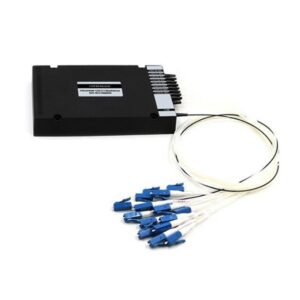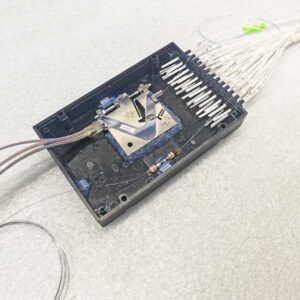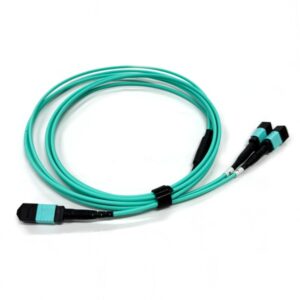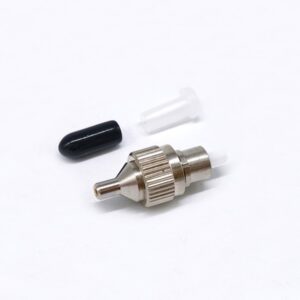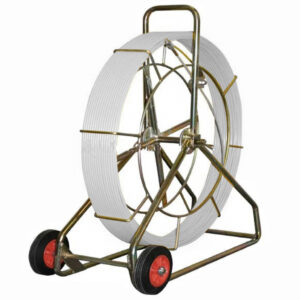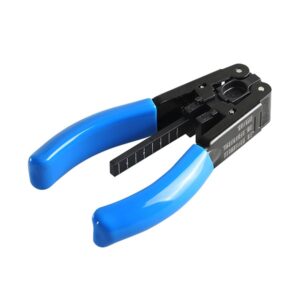WDM is Wavelength Division Multiplexer, WDM technology refers to the technology of combining two or more different wavelengths of optical signals at the transmitting end through a multiplexer (or Multiplexer) and coupling them into one fiber in the optical line for transmission. At the receiving end, the mixed signals are demultiplexed (or Demultiplexer) to separate the various wavelengths of the optical signals, which are then further processed by the optical receiver to restore the original signal.
WDM enables telephone companies and other carriers to increase the capacity of their existing fiber infrastructure.
WDM Products
Yingda provide all types of WDM products, include all types of package: steel tube, cassette, ABS module, LGX module, Rack mount patch panel, etc.

WDM Types
There are mainly 4 types of WDM, CWDM, DWDM, AAWG, FWDM. Below mainly introduce one by one.
CWDM
CWDM is Coarse Wavelength Division Multiplexer, it is a low-cost coarse WDM transmission technology for the access layer of metro networks. In principle, CWDM is the use of optical multiplexer to multiplex optical signals of different wavelengths into a single fiber for transmission, and at the receiving end of the link, the mixed signals in the fiber are decomposed into signals of different wavelengths with the help of optical demultiplexer and connected to the corresponding receiving equipment.
CWDM Wavelength
CWDM optics can achieve a maximum of 18 channels, cwdm wavelengths from 1270-1610nm, each channel wavelength spacing ± 20nm, each wavelength floating range ± 6.5nm.
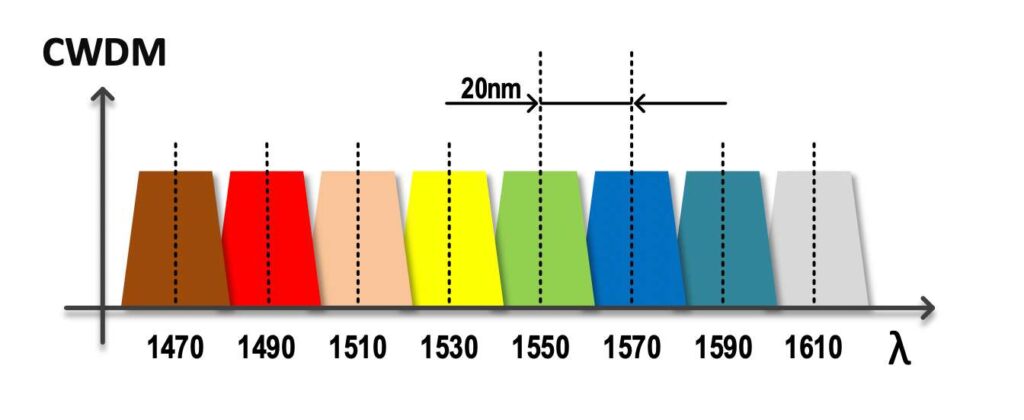
18 Channels are 18 wavelengths: 1270nm, 1290nm, 1310nm, 1330nm, 1350nm, 1370nm, 1390nm. 1410nm, 1430nm, 1450nm, 1470nm, 1490nm, 1510nm, 1530nm, 1550nm, 1570nm, 1590nm, 1610nm, 1410nm, 1430nm, 1450nm, 1470nm, 1490nm,1510nm, 1530nm, 1550nm,1570nm,1590nm,1610nm, and CWDM is used more in the second half wave 10CH to 18CH.


CWDM Module Application
Point-to-point, Ethernet, SDH, SONET ring, EPR (elastic packet ring) and other popular network structures
Short distance, high broadband, access point dense communication applications, such as intra-building or inter-building network communications
Used with PON or DSLAN, each individual wavelength channel can be used as a virtual optical link of PON to realize bandwidth data transmission of nodes and multiple distribution nodes, and can also be used in combination with DSLAN at the aggregation and access layers.
G.652, G.655 fiber, no relay transmission distance is not greater than 50km

DWDM
DWDM is Dense Wavelength Division Multiplexing (dense wdm), it can combine a set of optical wavelengths to transmit over a single fiber. It is a laser technology used to increase bandwidth over existing fiber optic backbone networks. More specifically, the dwdm technology involves multiplexing closely spaced spectra of individual fiber in a given fiber in order to take advantage of the achievable transmission performance (e.g., to achieve minimal color dispersion or attenuation). In this way, the total number of fibers required can be reduced for a given information transmission capacity.
DWDM inner structure is the same as CWDM, but the channel spacing is shorter, need temperature control system and laser control system, need better laser to regulate and control, Meanwhile, the naming of the transmission end (TX) is: C21 C22 C23 C24…. C60, not wavelength of CWDM.
Fiber DWDM module has a more dense channel distribution, can transmit more signals in one fiber. Therefore DWDM is more suitable for the future application of high-speed high-capacity optical networks, more development prospects. The future development trend of all-optical network, also put forward higher requirements for various devices in the network. In general, DWDM technology requires optical devices with large channel count, high integration, low loss, high stability, low cost and other characteristics.

DWDM C Band wavelength
DWDM can do a maximum of 150 channels, wavelength from 1270-1610nm (abbreviated C21-C60), each channel wavelength spacing ± 0.8nm (100G spacing) or ± 1.6nm (200G spacing). DWDM is generally around 1550nm, concentrated in the C-band between 1530nm and 1560nm, so a very small band; DWDM can have 40CH or 80CH. This also means that DWDM can support more than 150 beams of different wavelengths for simultaneous transmission, with each beam reaching a maximum data rate of 100Gb/s.
DWDM Mux Demux Application
Long distance, high capacity long haul trunk backbone network, or very large capacity metropolitan network core node.
ITU Grid 100G DWDM Wavelength
| Dense Wavelength Division Multiplexing (DWDM) | ||||||
| ITU Grid: C-Band, 100 GHz Spacing | ||||||
| Channel | Frequency | Wavelength | Channel | Frequency | Wavelength | |
| (#) | (GHz) | (nm) | (#) | (GHz) | (nm) | |
| 1 | 190100 | 1577.03 | 37 | 193700 | 1547.72 | |
| 2 | 190200 | 1576.2 | 38 | 193800 | 1546.92 | |
| 3 | 190300 | 1575.37 | 39 | 193900 | 1546.12 | |
| 4 | 190400 | 1574.54 | 40 | 194000 | 1545.32 | |
| 5 | 190500 | 1573.71 | 41 | 194100 | 1544.53 | |
| 6 | 190600 | 1572.89 | 42 | 194200 | 1543.73 | |
| 7 | 190700 | 1572.06 | 43 | 194300 | 1542.94 | |
| 8 | 190800 | 1571.24 | 44 | 194400 | 1542.14 | |
| 9 | 190900 | 1570.42 | 45 | 194500 | 1541.35 | |
| 10 | 191000 | 1569.59 | 46 | 194600 | 1540.56 | |
| 11 | 191100 | 1568.77 | 47 | 194700 | 1539.77 | |
| 12 | 191200 | 1567.95 | 48 | 194800 | 1538.98 | |
| 13 | 191300 | 1567.13 | 49 | 194900 | 1538.19 | |
| 14 | 191400 | 1566.31 | 50 | 195000 | 1537.4 | |
| 15 | 191500 | 1565.5 | 51 | 195100 | 1536.61 | |
| 16 | 191600 | 1564.68 | 52 | 195200 | 1535.82 | |
| 17 | 191700 | 1563.86 | 53 | 195300 | 1535.04 | |
| 18 | 191800 | 1563.05 | 54 | 195400 | 1534.25 | |
| 19 | 191900 | 1562.23 | 55 | 195500 | 1533.47 | |
| 20 | 192000 | 1561.41 | 56 | 195600 | 1532.68 | |
| 21 | 192100 | 1560.61 | 57 | 195700 | 1531.9 | |
| 22 | 192200 | 1559.79 | 58 | 195800 | 1531.12 | |
| 23 | 192300 | 1558.98 | 59 | 195900 | 1530.33 | |
| 24 | 192400 | 1558.17 | 60 | 196000 | 1529.55 | |
| 25 | 192500 | 1557.36 | 61 | 196100 | 1528.77 | |
| 26 | 192600 | 1556.55 | 62 | 196200 | 1527.99 | |
| 27 | 192700 | 1555.75 | 63 | 196300 | 1527.22 | |
| 28 | 192800 | 1554.94 | 64 | 196400 | 1526.44 | |
| 29 | 192900 | 1554.13 | 65 | 196500 | 1525.66 | |
| 30 | 193000 | 1553.33 | 66 | 196600 | 1524.89 | |
| 31 | 193100 | 1552.52 | 67 | 196700 | 1524.11 | |
| 32 | 193200 | 1551.72 | 68 | 196800 | 1523.34 | |
| 33 | 193300 | 1550.92 | 69 | 196900 | 1522.56 | |
| 34 | 193400 | 1550.12 | 70 | 197000 | 1521.79 | |
| 35 | 193500 | 1549.32 | 71 | 197100 | 1521.02 | |
| 36 | 193600 | 1548.51 | 72 | 197200 | 1520.25 | |
ITU Grid 200G DWDM Wavelength
| Dense Wavelength Division Multiplexing (DWDM) | ||||||
| ITU Grid Channels: C- Band, 200GHz Spacing | ||||||
| Channel | Frequency | Wavelength | Channel | Frequency | Wavelength | |
| (#) | (GHz) | (nm) | (#) | (GHz) | (nm) | |
| 1 | 190100 | 1577.03 | 39 | 193900 | 1546.12 | |
| 3 | 190300 | 1575.37 | 41 | 194100 | 1544.53 | |
| 5 | 190500 | 1573.71 | 43 | 194300 | 1542.94 | |
| 7 | 190700 | 1572.06 | 45 | 194500 | 1541.35 | |
| 9 | 190900 | 1570.42 | 47 | 194700 | 1539.77 | |
| 11 | 191100 | 1568.77 | 49 | 194900 | 1538.19 | |
| 13 | 191300 | 1567.13 | 51 | 195100 | 1536.61 | |
| 15 | 191500 | 1565.5 | 53 | 195300 | 1535.04 | |
| 17 | 191700 | 1563.86 | 55 | 195500 | 1533.47 | |
| 19 | 191900 | 1562.23 | 57 | 195700 | 1531.9 | |
| 21 | 192100 | 1560.61 | 59 | 195900 | 1530.33 | |
| 23 | 192300 | 1558.98 | 61 | 196100 | 1528.77 | |
| 25 | 192500 | 1557.36 | 63 | 196300 | 1527.22 | |
| 27 | 192700 | 1555.75 | 65 | 196500 | 1525.66 | |
| 29 | 192900 | 1554.13 | 67 | 196700 | 1524.11 | |
| 31 | 193100 | 1552.52 | 69 | 196900 | 1522.56 | |
| 33 | 193300 | 1550.92 | 71 | 197100 | 1521.02 | |
| 35 | 193500 | 1549.32 | 73 | 197300 | 1519.48 | |
| 37 | 193700 | 1547.72 | ||||
AAWG
AAWG non-thermal array waveguide grating WDM, is based on silicon planar waveguide optical circuit (PLC) grating technology made of dense WDM, using a thermally insensitive structure, no need to control the temperature of the chip, the product attenuation attenuation is small, large capacity, stable and reliable products.
AAWG is actually also DWDM, but he uses the chip agent inside the splitting and combining, the cost is lower, saving the process.
Each channel uniform loss, no fusion sequence, there are mainly 2 types.
| Type | 1dB | 3dB | Attenuation loss |
| Gaussian type | 0.2 | 0.4 | <4.5dB |
| Flat top type | 0.4 | 0.6 | 4.8-5.5dB, Generally 6dB or loss |
Note:
Gaussin type – for every 1dB increase in wavelength, there is 0.2dB loss value from the center wavelength.
If the customer wants low loss <3.5dB, you need to add jumpers, DWSM is expensive than CWDM. Generaly 16CH will need to add jumpers to reduce the loss.
Features of AWG
AWG is based on the roland circle principle to achieve multiplexing and demultiplexing of multiple wavelengths, and consists of an input waveguide, an input flat waveguide, an array waveguide, an output flat waveguide and an output waveguide arranged in sequence. The multi-wavelength multiplexed light can be diffracted from any of the input waveguides into the array waveguide through the input flat waveguide. The light is emitted from the array waveguide, and the light with the same wavelength and phase is focused to a specific output waveguide and outputted at the output in a certain order, thus realizing the demultiplexing of multiplexed light; when the light transmission direction is opposite, multiple wavelengths can also be multiplexed to the same port output to realize the multiplexing function.
AWG Transmission Principle
AWG is based on Planar Light Wave Circuit (PLC) technology and has the advantages of small wavelength spacing, large number of channels (the production cost of AWG is basically the same for different number of channels), uniform channel loss, small size, easy integration and mass production, etc. It is considered the most suitable for high-capacity Dense Wavelength Division Multiplexing system key device.
AWG commonly used 100G 40CH: C21-C60, 48CH: C17-C64, commonly use LC / UPC connectors, SFP optical module interface, and also can be customized.
AWG Application
Backbone transmission, multiplexing / demultiplexing systems, LAN, CATV, gpon, ftth network, telcom, transmission network.







